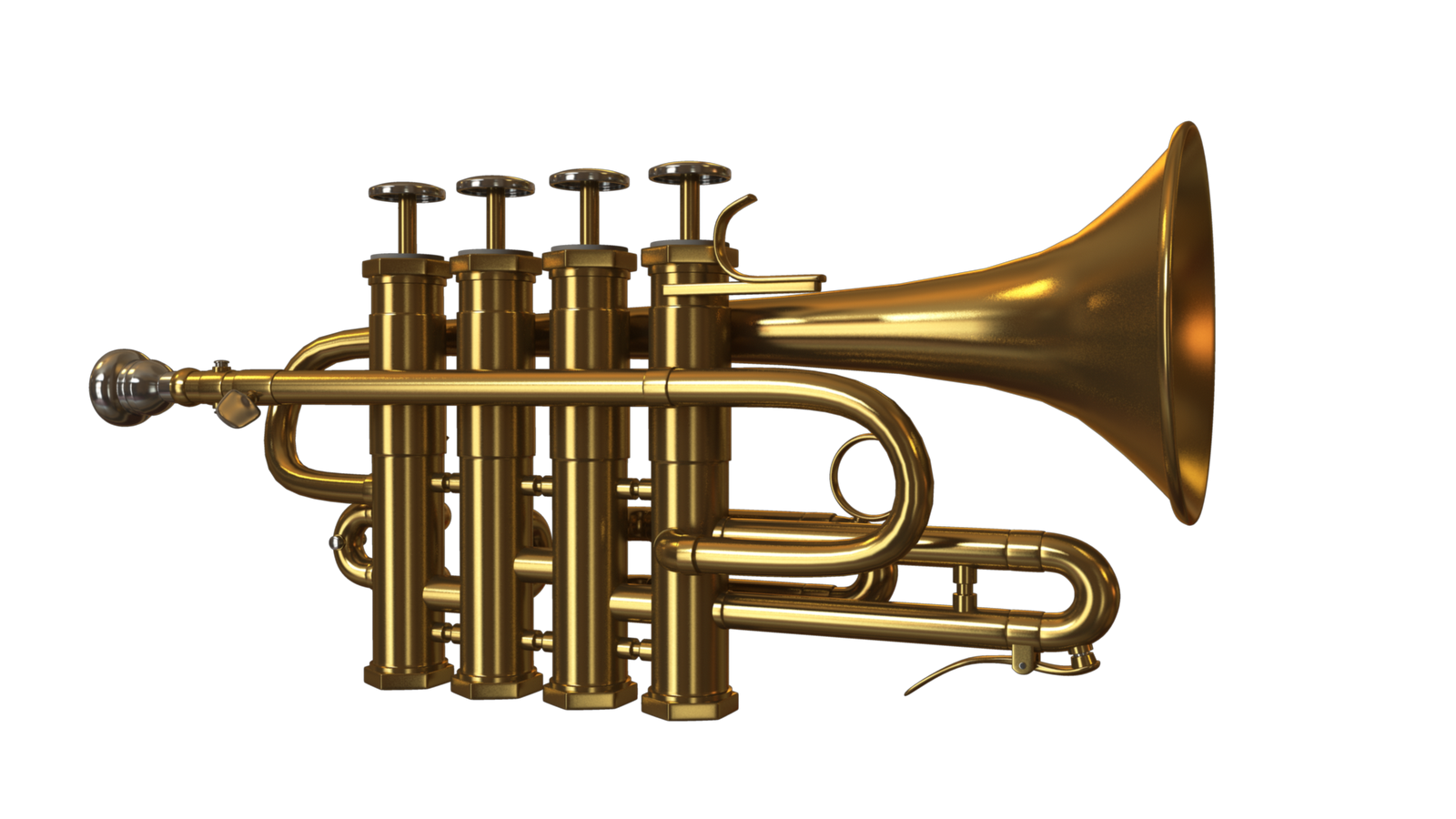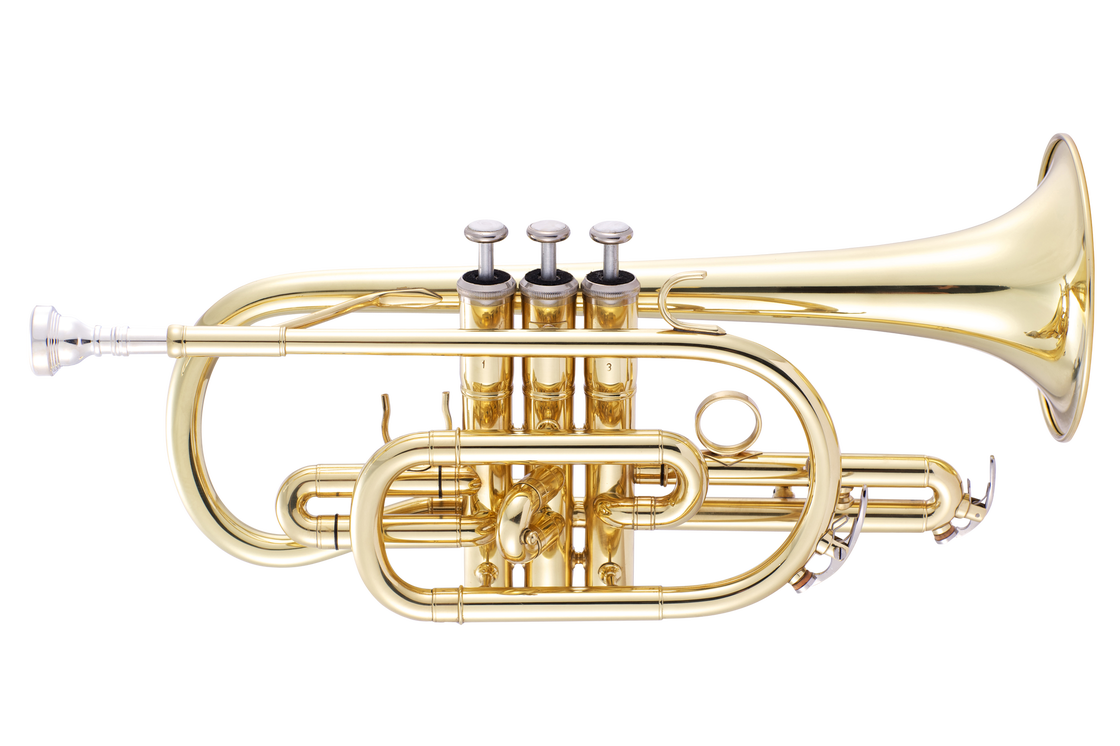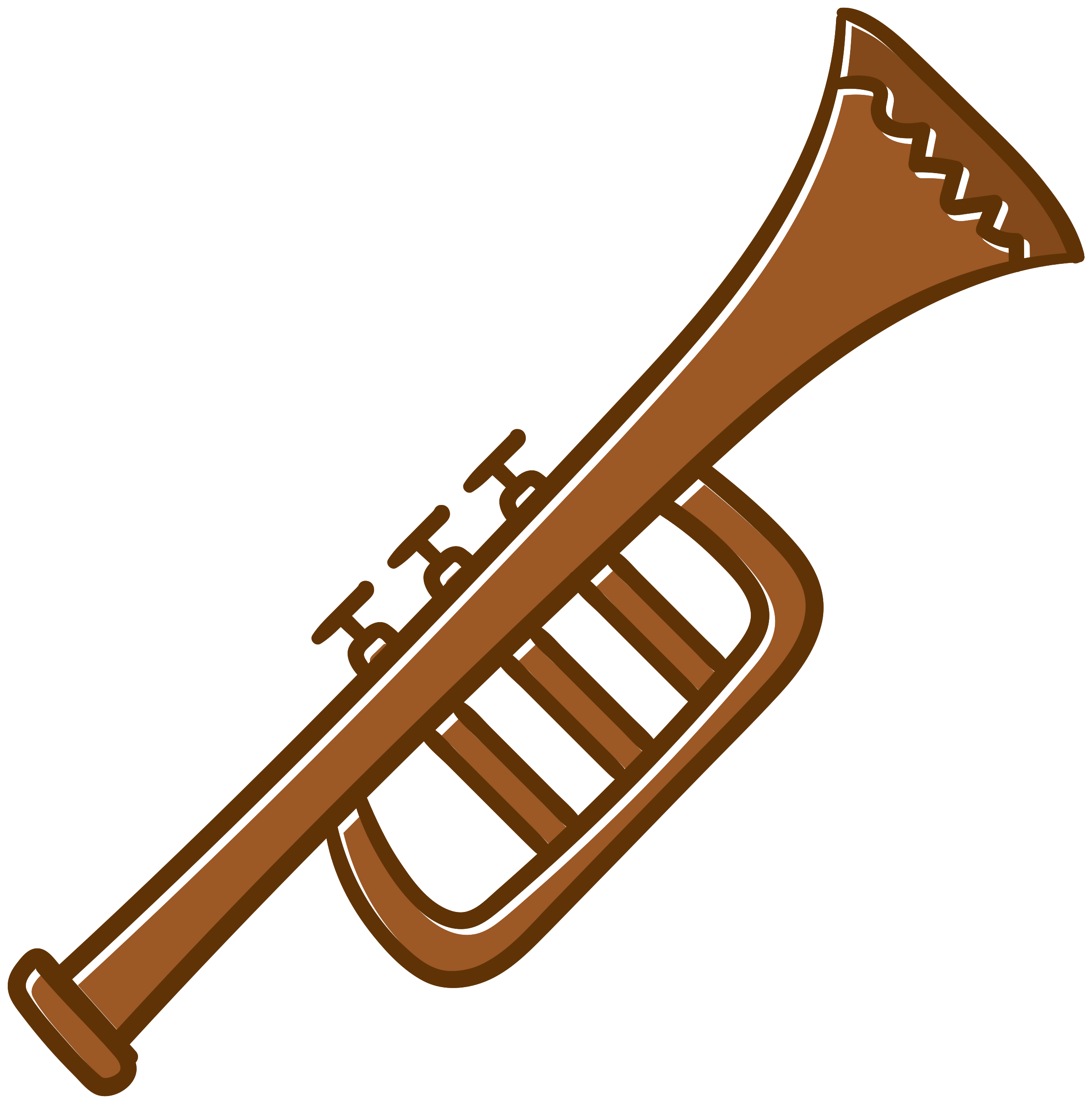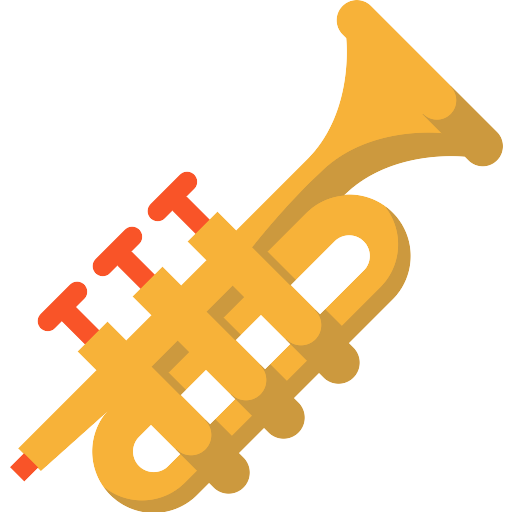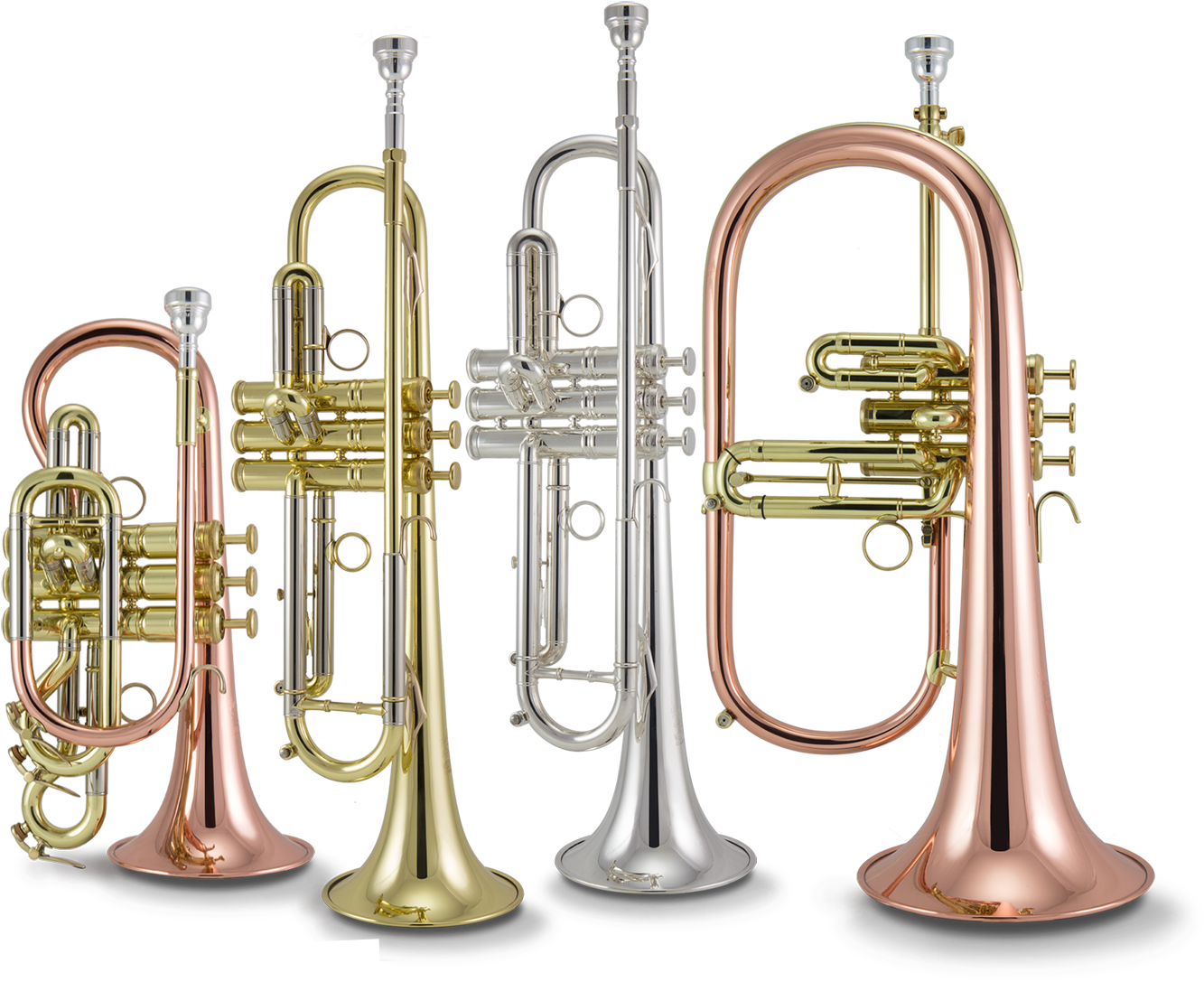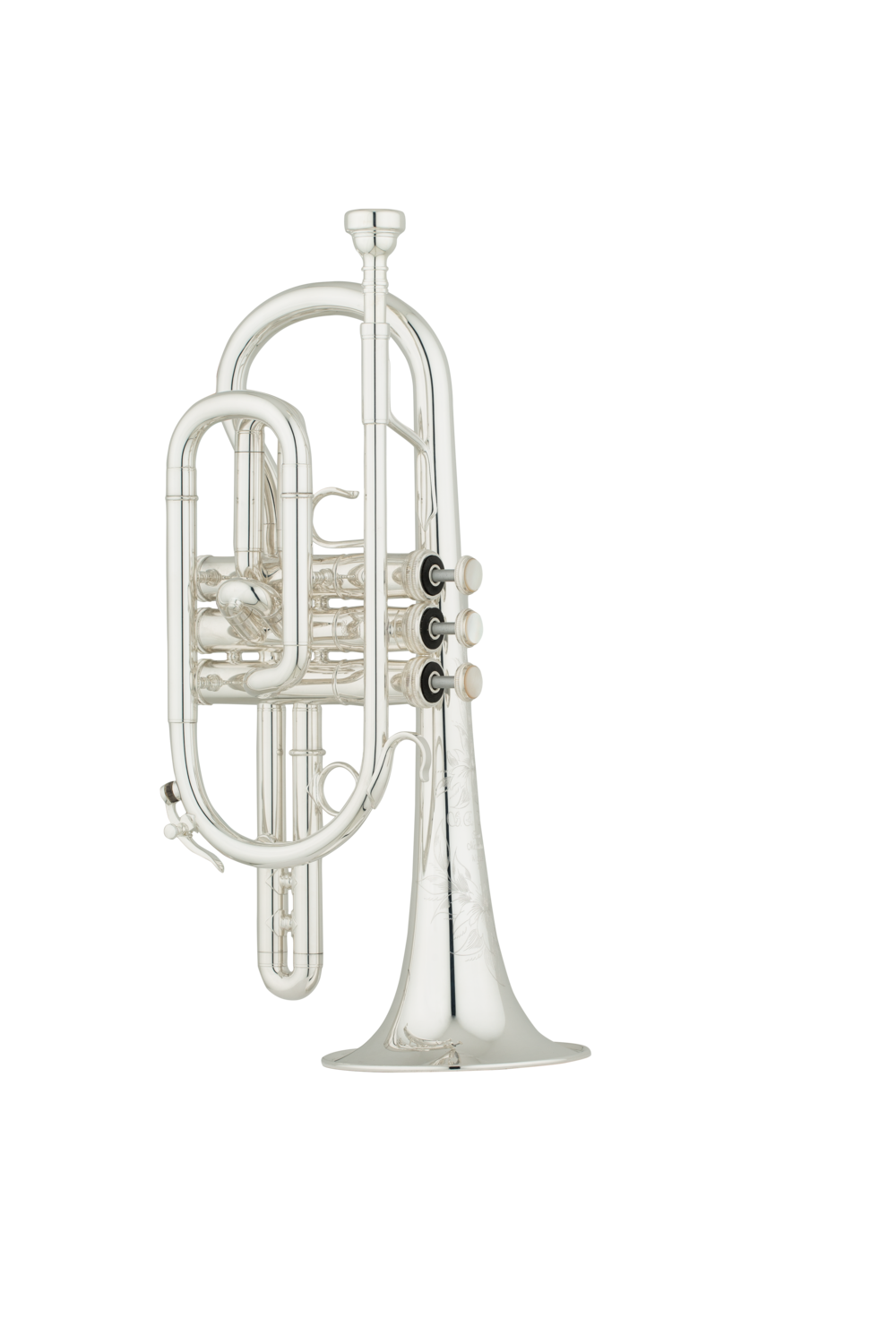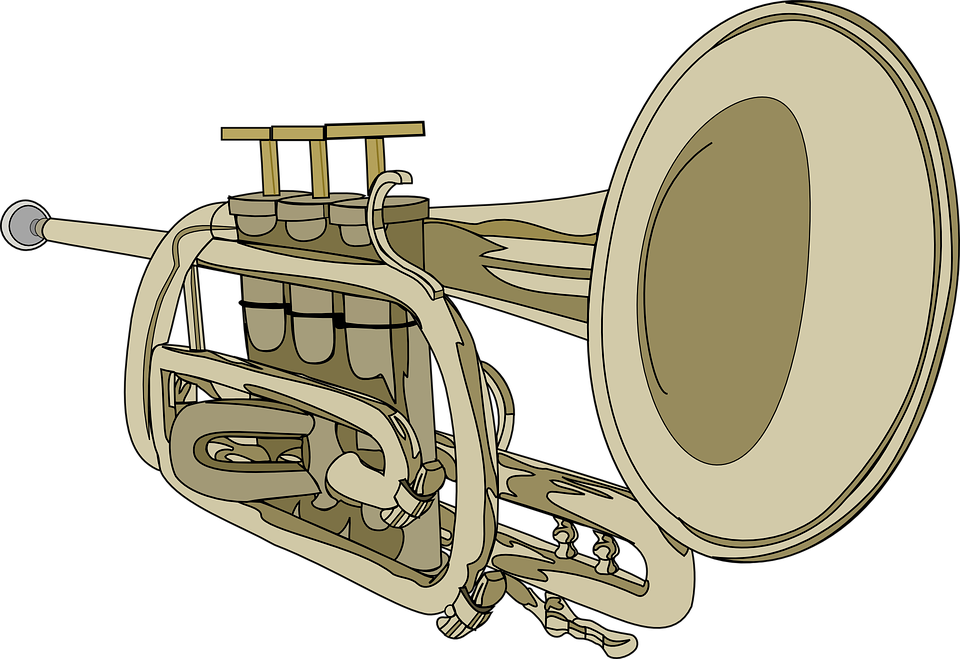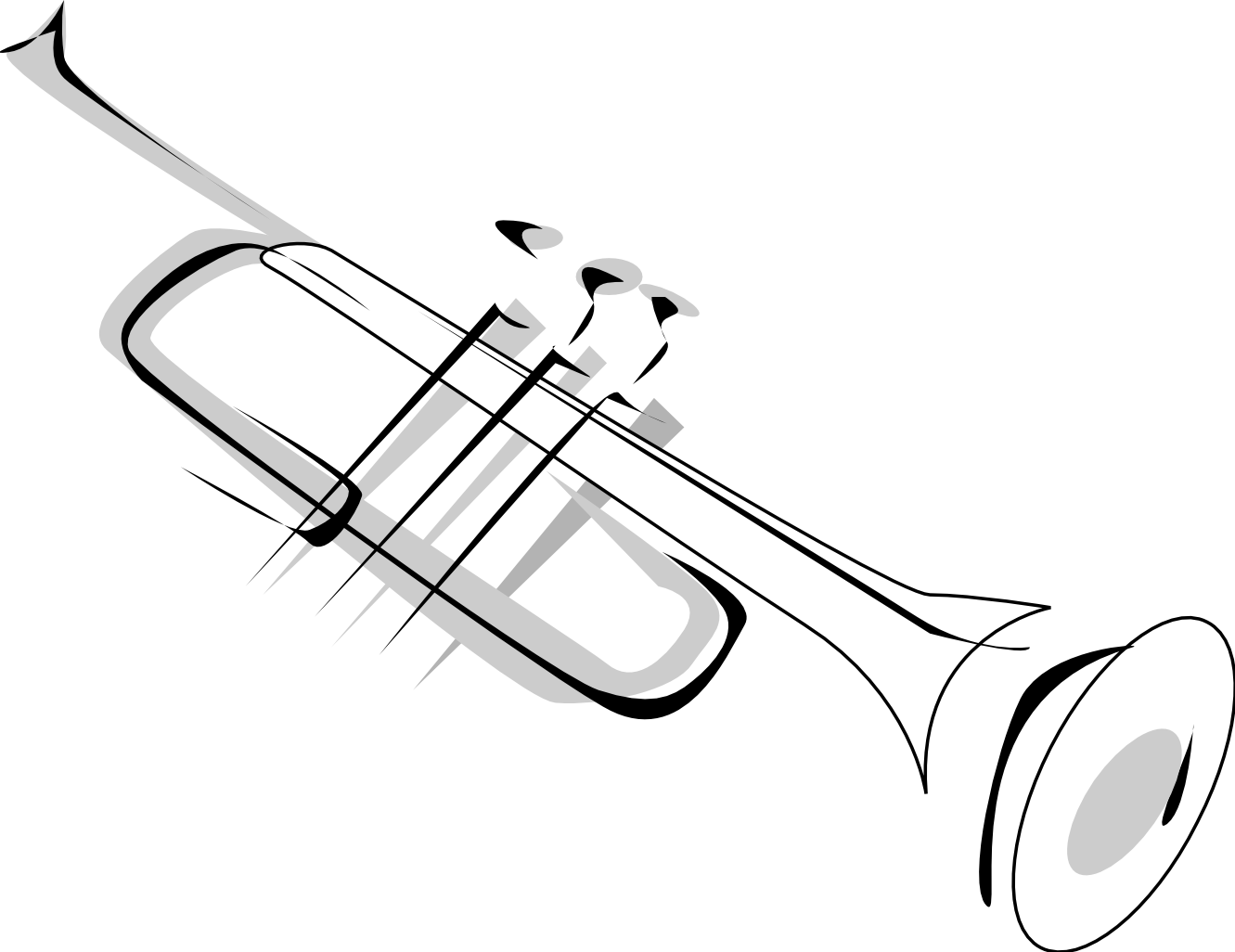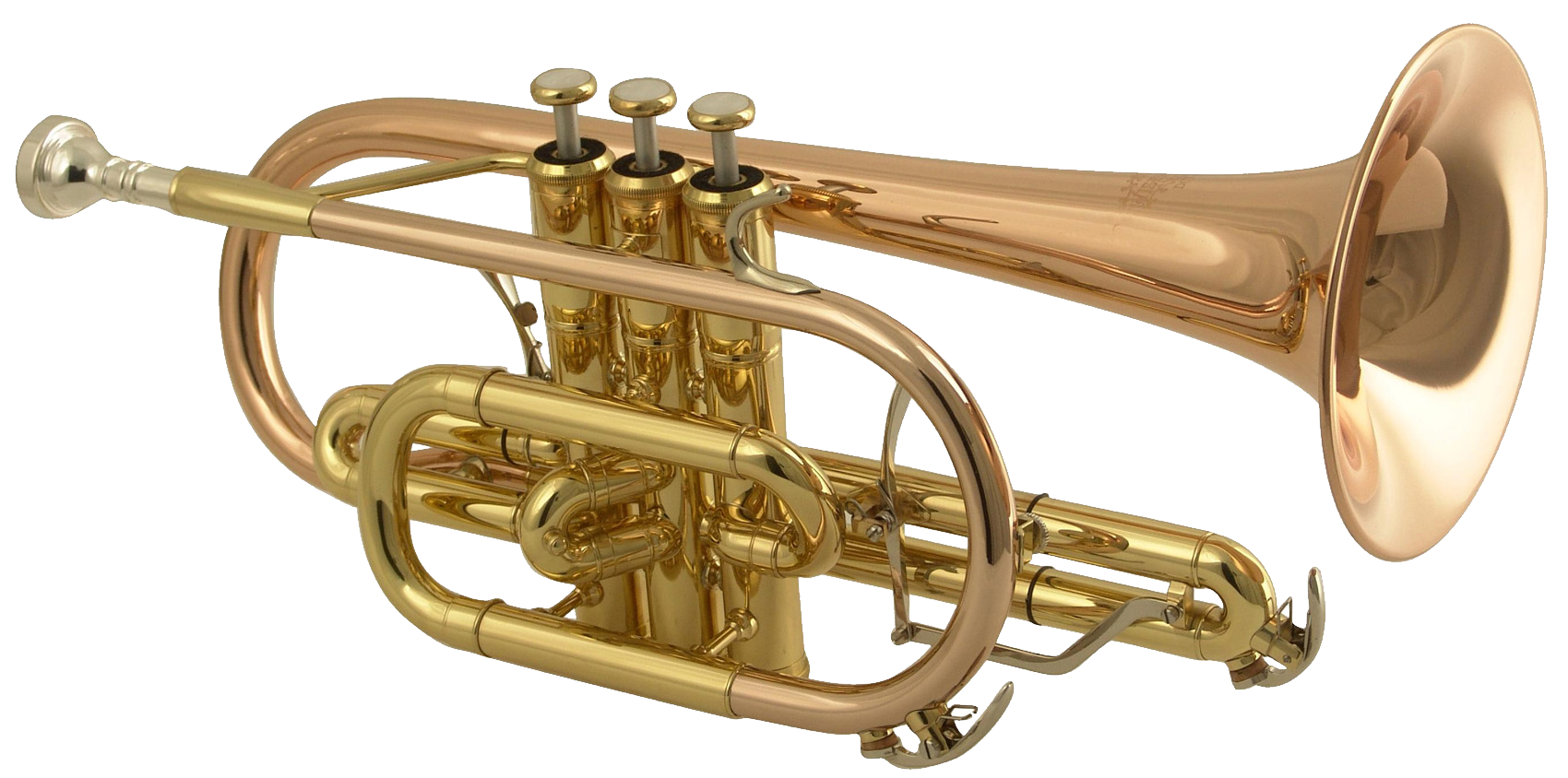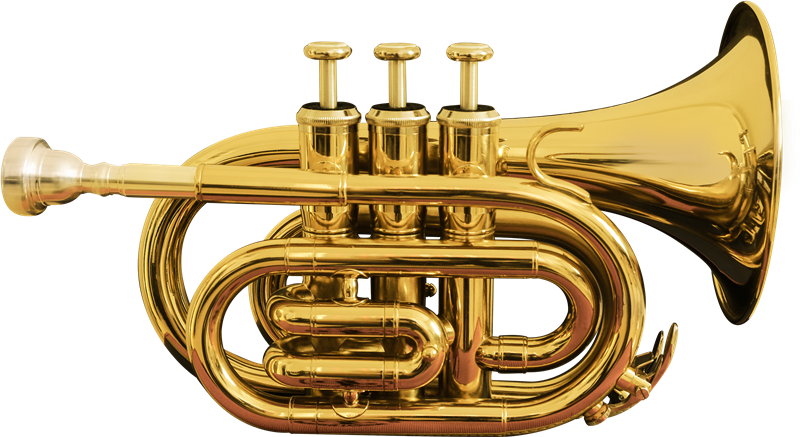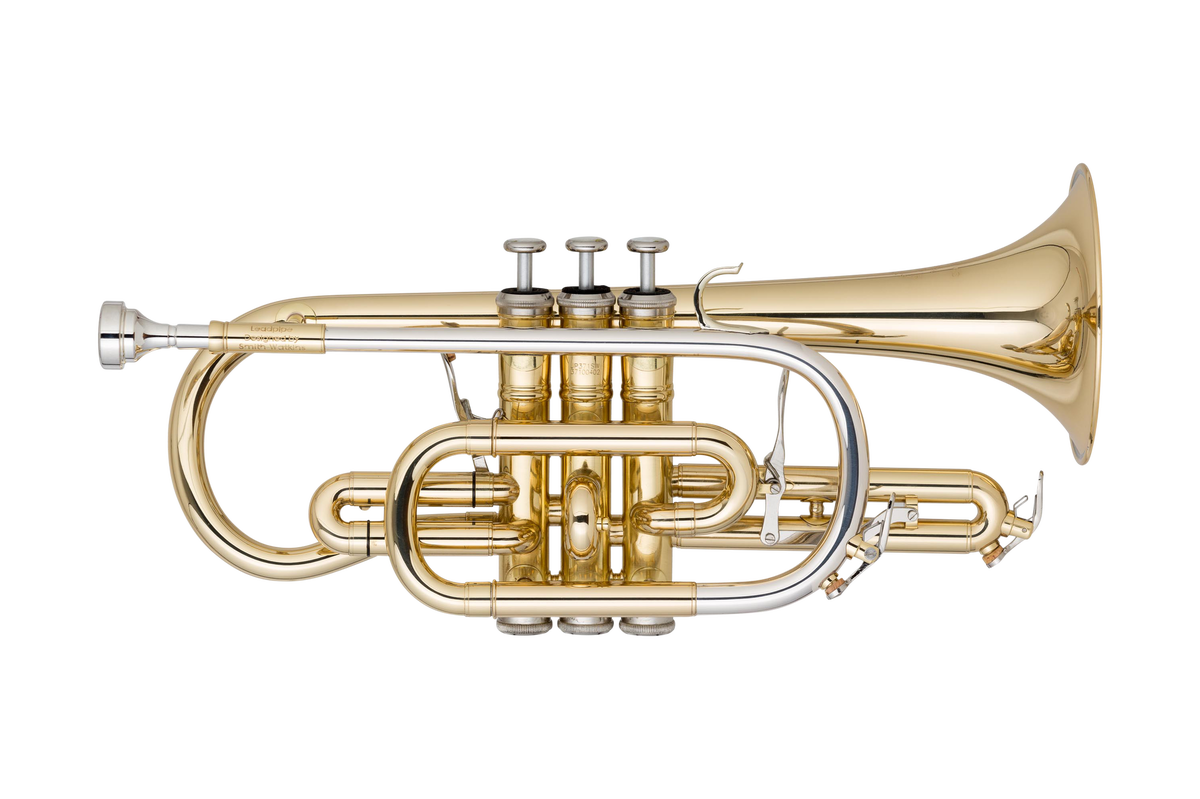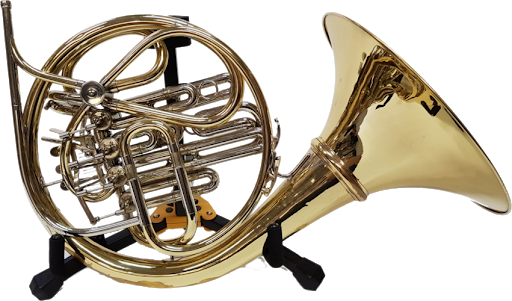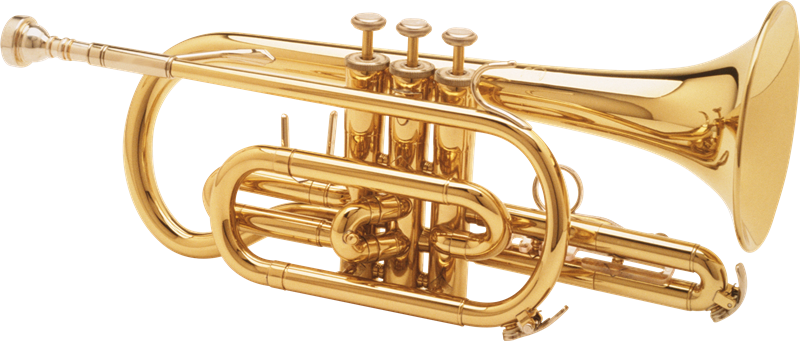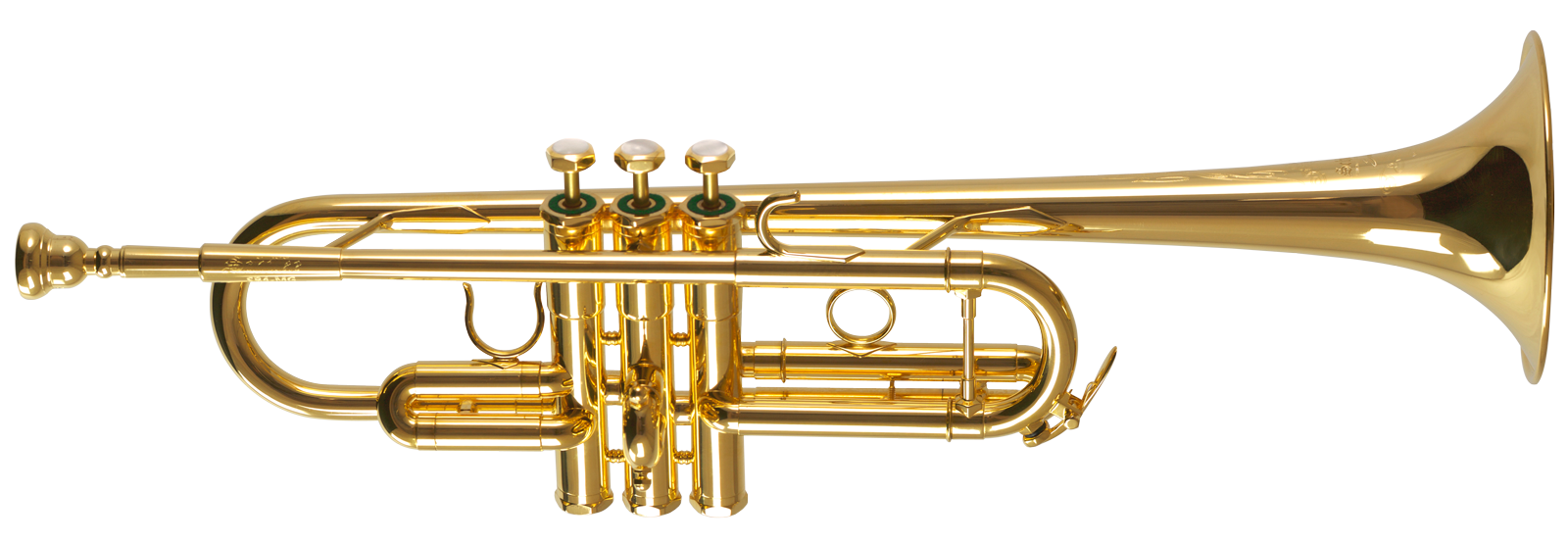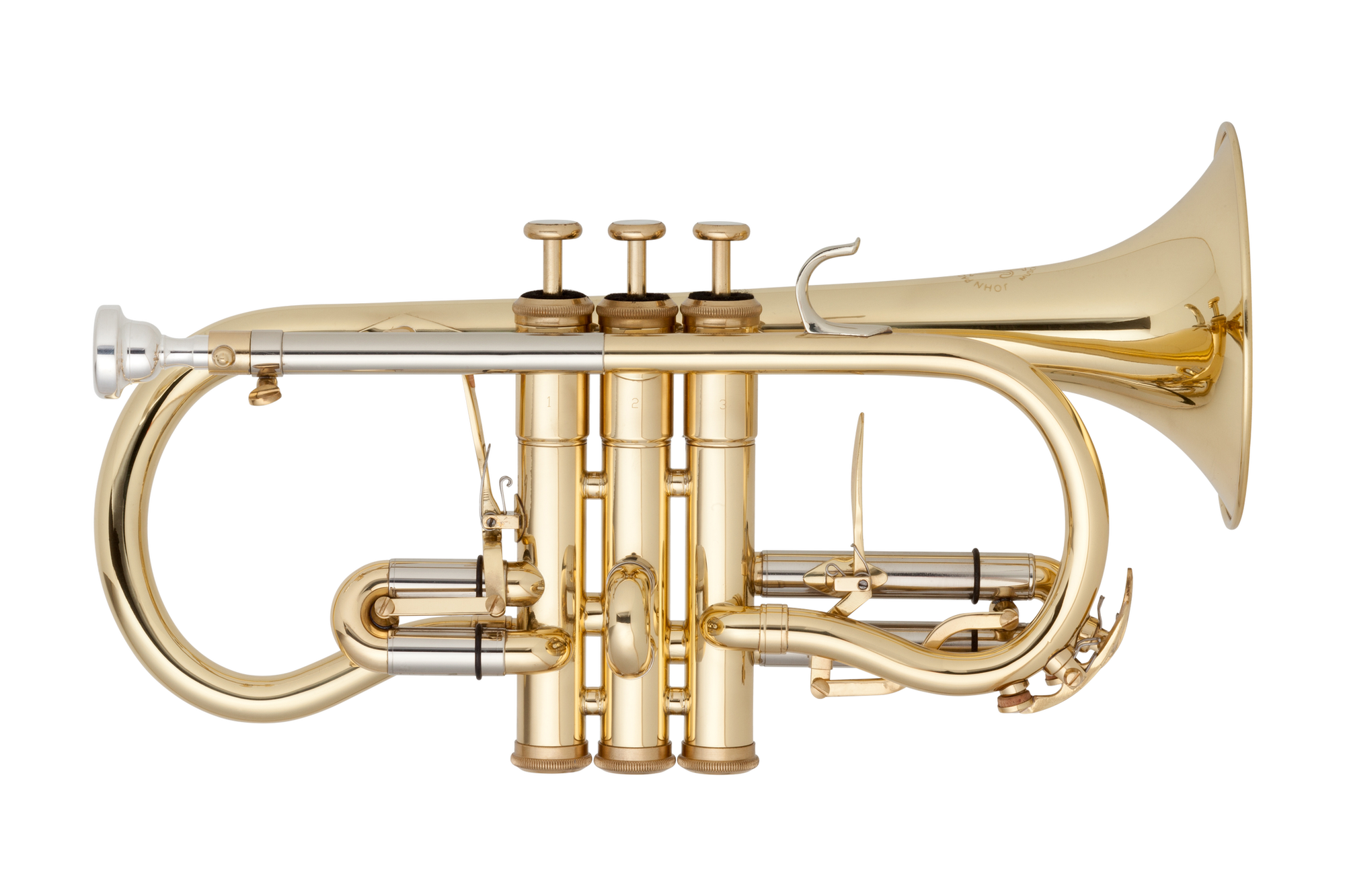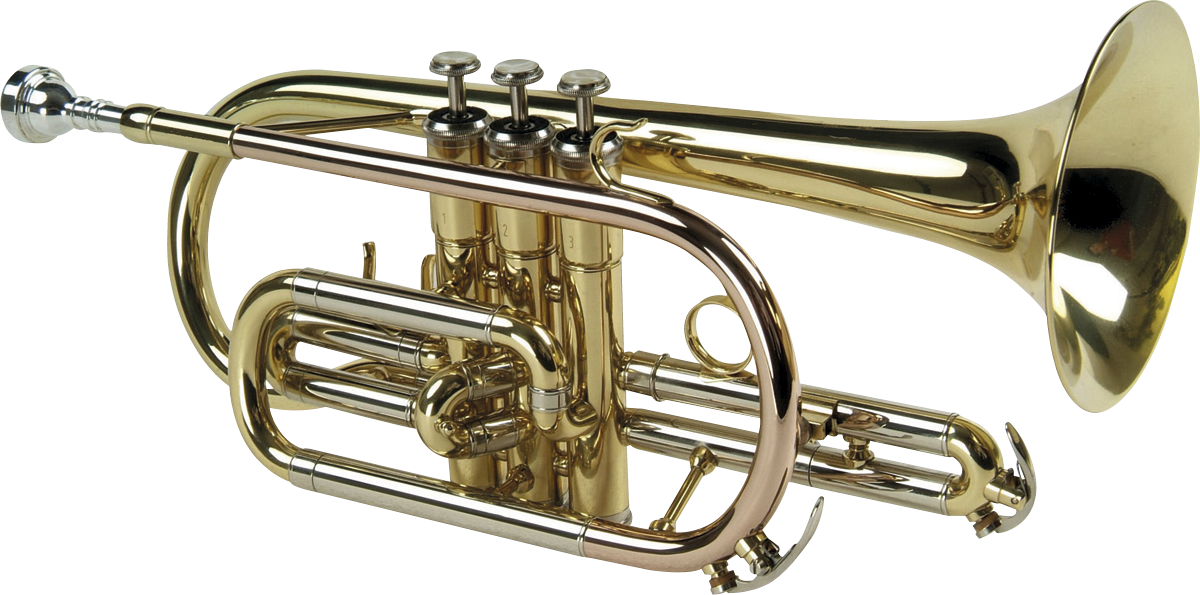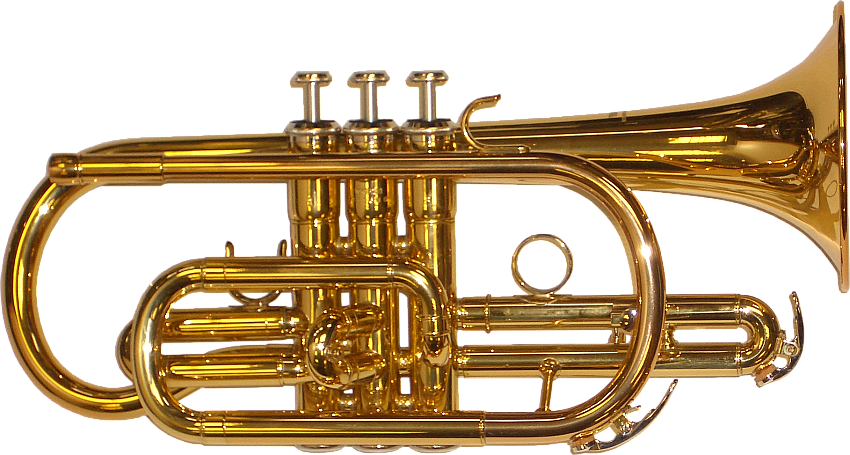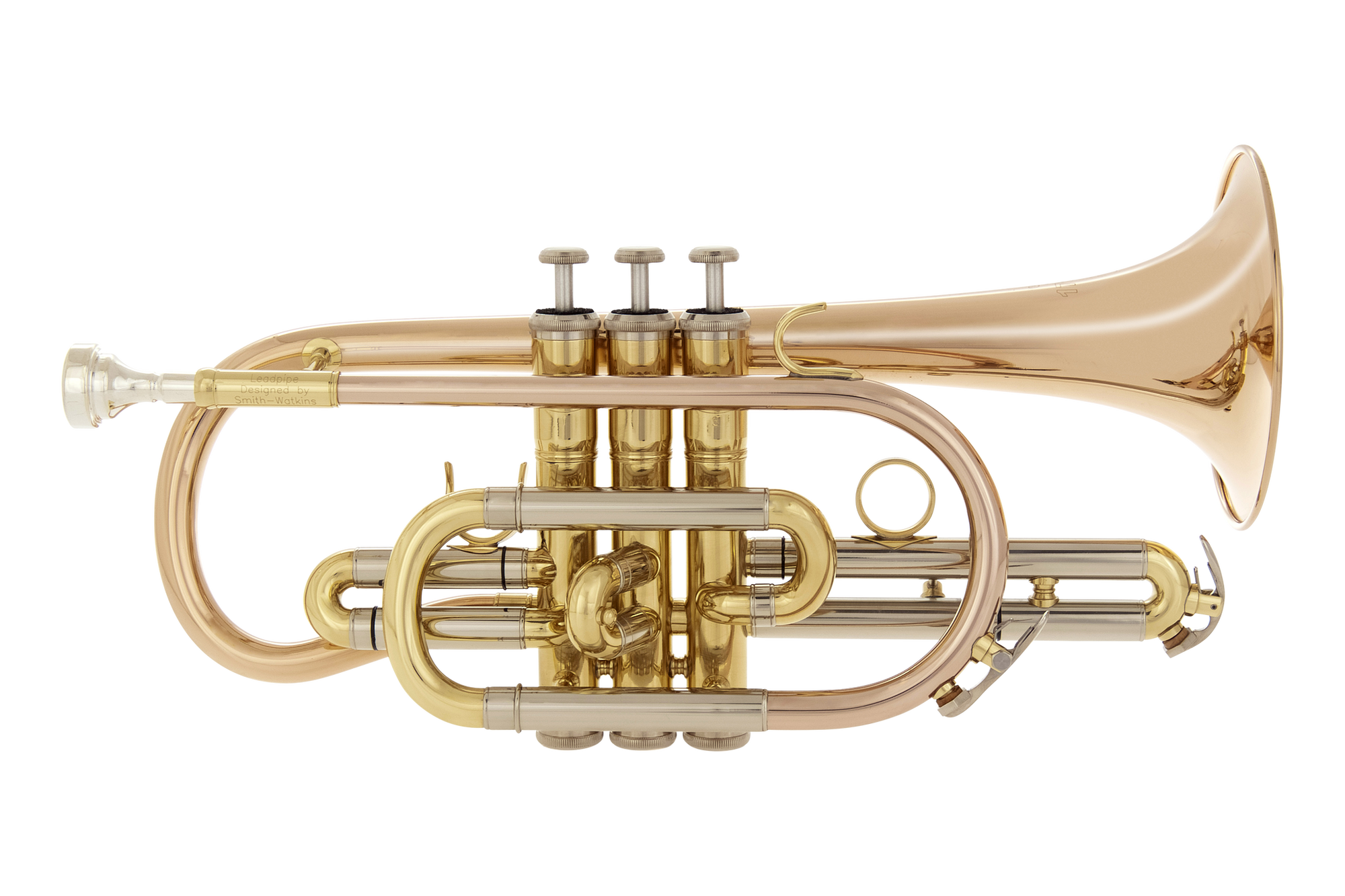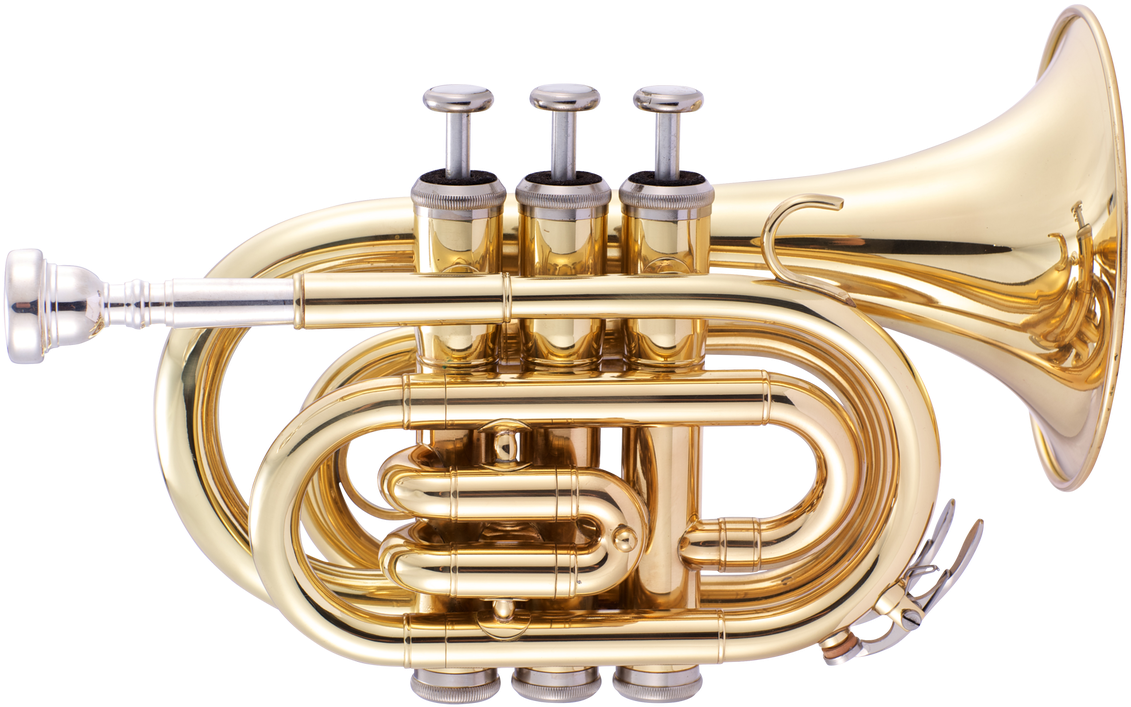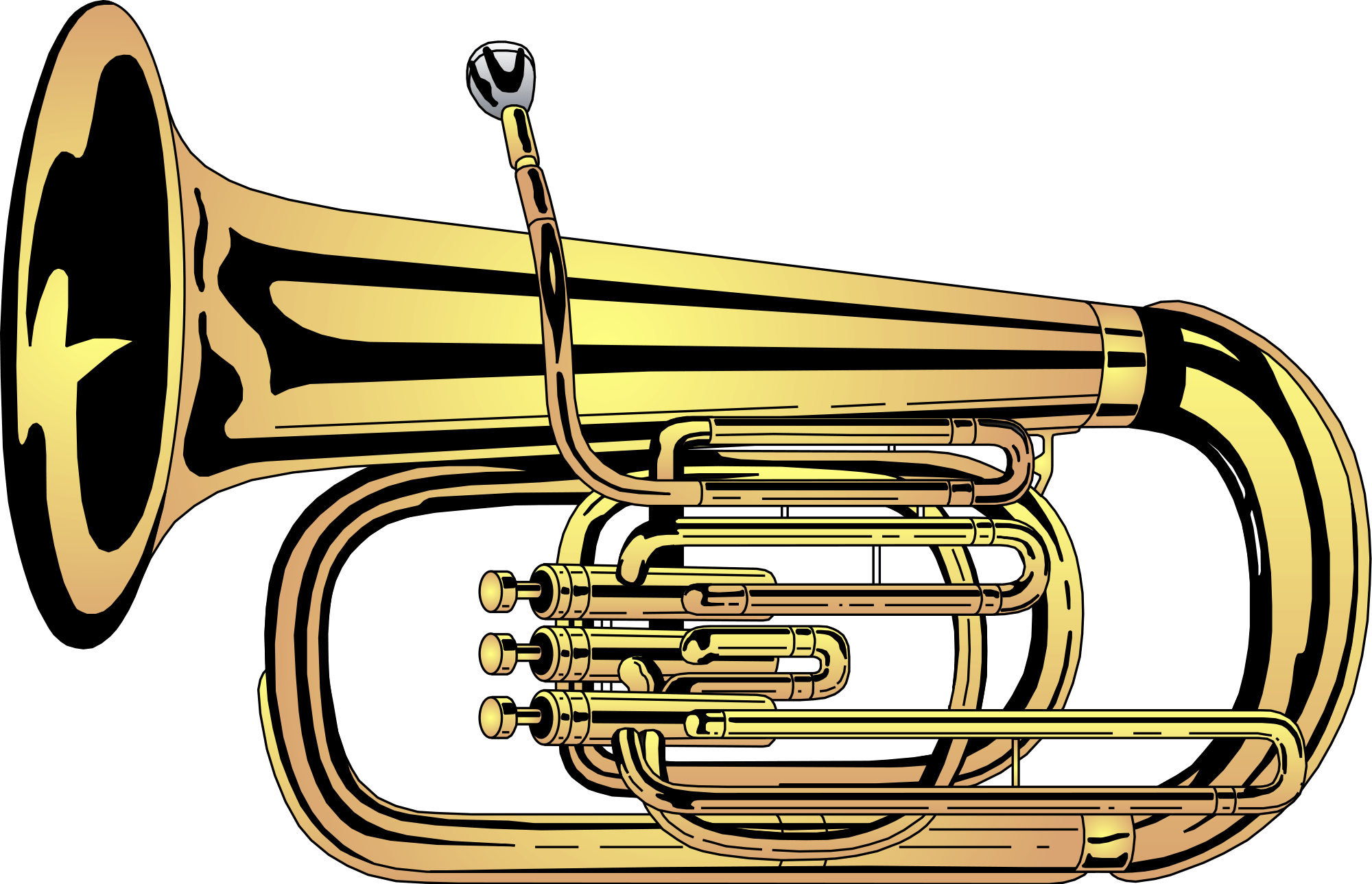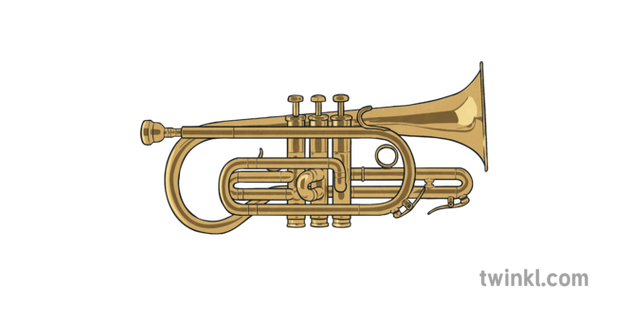Download top and best high-quality free Cornet PNG Transparent Images backgrounds available in various sizes. To view the full PNG size resolution click on any of the below image thumbnail.
License Info: Creative Commons 4.0 BY-NC
The cornet is a metal instrument similar to the trumpet but distinguished by its conical gauge, more compact shape, and smoother sound quality. The most common cornet is a transposing instrument in B, although there is also a soprano cornet in E ♭ and cornets in A and C. Not all are related to the Renaissance and early Baroque cornet.
The cornet is derived from the posthorn, applying rotary valves to it in the 1820s in France. However, in the 1830s, Parisian manufacturers were using piston valves. Cornets first appeared as separate instrumental parts in 19th-century French compositions.
This instrument could not have been developed without the improvement of piston valves by the Silesian trumpeter Friedrich Blühmel and Heinrich Stölzel in the early 19th century. These two instrument makers invented valves almost simultaneously, although it is likely that Blühmel (or Blümel) was the inventor and Stölzel, who developed a practical instrument. They filed a joint patent application and obtained it for ten years. Later, and most importantly, François Périnet received a patent in 1838 for an improved valve that is the basis for all modern piston valves for brass instruments. The first notable virtuoso was Jean-Baptiste Arban, who studied the cornet extensively and published La grande méthode complète de cornet à piston et de saxhorn, commonly known as the Arban method, in 1864. Until the early 20th century, the trumpet and cornet lived together in musical groups. The symphonic repertoire often includes separate parts for trumpet and cornet. As more instrument makers improved the two instruments, they began to look and feel more alike. The modern cornet is used in brass bands, concert orchestras, and a specific orchestral repertoire requiring a softer sound.
The cornet’s name derives from corne, which means horn, itself from the Latin “cornu.” Although not related musically, instruments in the Zink family (which includes serpents) are called “cornetto” or “cornett” in modern English to distinguish them from the valve horn described here. The eleventh edition of the Encyclopædia Britannica called snakes “old wooden cones.” The Roman / Etruscan horn (or simply “horn”) is the lingual ancestor. It is an ancestor of the pole horn from which the cornet evolved, and was used as a cornet to signal orders on the battlefield.
Download Cornet PNG images transparent gallery.
- Cornet PNG Free Image
Resolution: 924 × 770
Size: 666 KB
Image Format: .png
Download
- Cornet PNG HD Image
Resolution: 1600 × 900
Size: 670 KB
Image Format: .png
Download
- Cornet PNG High Quality Image
Resolution: 1120 × 746
Size: 530 KB
Image Format: .png
Download
- Cornet PNG Image File
Resolution: 2397 × 2429
Size: 272 KB
Image Format: .png
Download
- Cornet PNG Image
Resolution: 512 × 512
Size: 21 KB
Image Format: .png
Download
- Cornet PNG Images
Resolution: 1333 × 1087
Size: 1692 KB
Image Format: .png
Download
- Cornet PNG Photo
Resolution: 1280 × 1094
Size: 174 KB
Image Format: .png
Download
- Cornet PNG Pic
Resolution: 1000 × 1500
Size: 362 KB
Image Format: .png
Download
- Cornet PNG Picture
Resolution: 960 × 659
Size: 369 KB
Image Format: .png
Download
- Cornet PNG
Resolution: 512 × 512
Size: 19 KB
Image Format: .png
Download
- Cornet Transparent
Resolution: 1331 × 1026
Size: 106 KB
Image Format: .png
Download
- Cornet
Resolution: 1700 × 844
Size: 1159 KB
Image Format: .png
Download
- Golden Cornet PNG Clipart
Resolution: 2958 × 1614
Size: 517 KB
Image Format: .png
Download
- Golden Cornet PNG Free Download
Resolution: 1200 × 799
Size: 529 KB
Image Format: .png
Download
- Golden Cornet PNG Image
Resolution: 512 × 301
Size: 223 KB
Image Format: .png
Download
- Golden Cornet PNG
Resolution: 3041 × 1296
Size: 416 KB
Image Format: .png
Download
- Golden Cornet Transparent
Resolution: 1600 × 554
Size: 582 KB
Image Format: .png
Download
- Golden Cornet
Resolution: 2000 × 1333
Size: 1477 KB
Image Format: .png
Download
- Cornet Musical Instrument PNG Clipart
Resolution: 1200 × 595
Size: 964 KB
Image Format: .png
Download
- Cornet Musical Instrument PNG Free Download
Resolution: 850 × 455
Size: 483 KB
Image Format: .png
Download
- Cornet Musical Instrument PNG Image
Resolution: 2000 × 1333
Size: 1540 KB
Image Format: .png
Download
- Cornet Musical Instrument PNG
Resolution: 960 × 480
Size: 60 KB
Image Format: .png
Download
- Cornet Musical Instrument Transparent
Resolution: 1131 × 707
Size: 1130 KB
Image Format: .png
Download
- Cornet Musical Instrument
Resolution: 1299 × 431
Size: 287 KB
Image Format: .png
Download
- Cornet PNG Clipart
Resolution: 512 × 512
Size: 5 KB
Image Format: .png
Download
- Cornet PNG Download Image
Resolution: 2000 × 1289
Size: 172 KB
Image Format: .png
Download
- Cornet PNG File
Resolution: 630 × 315
Size: 221 KB
Image Format: .png
Download
- Cornet PNG Free Download
Resolution: 512 × 512
Size: 8 KB
Image Format: .png
Download

